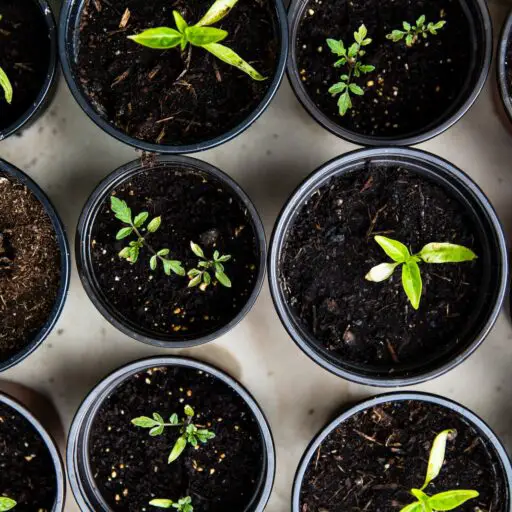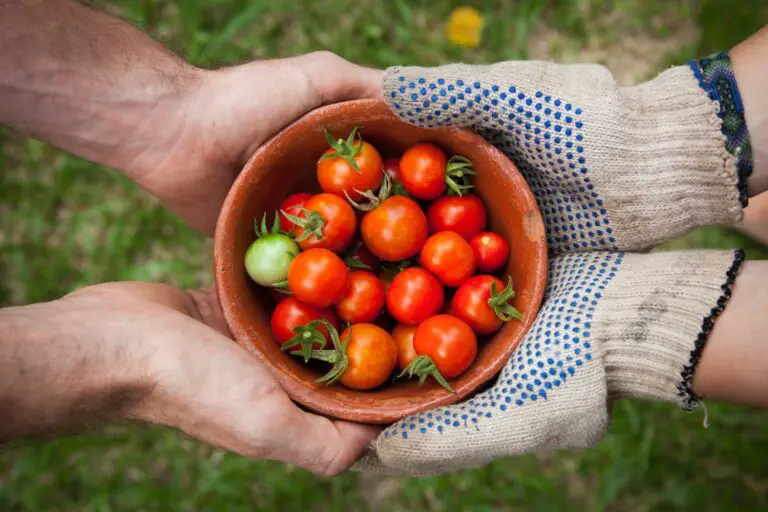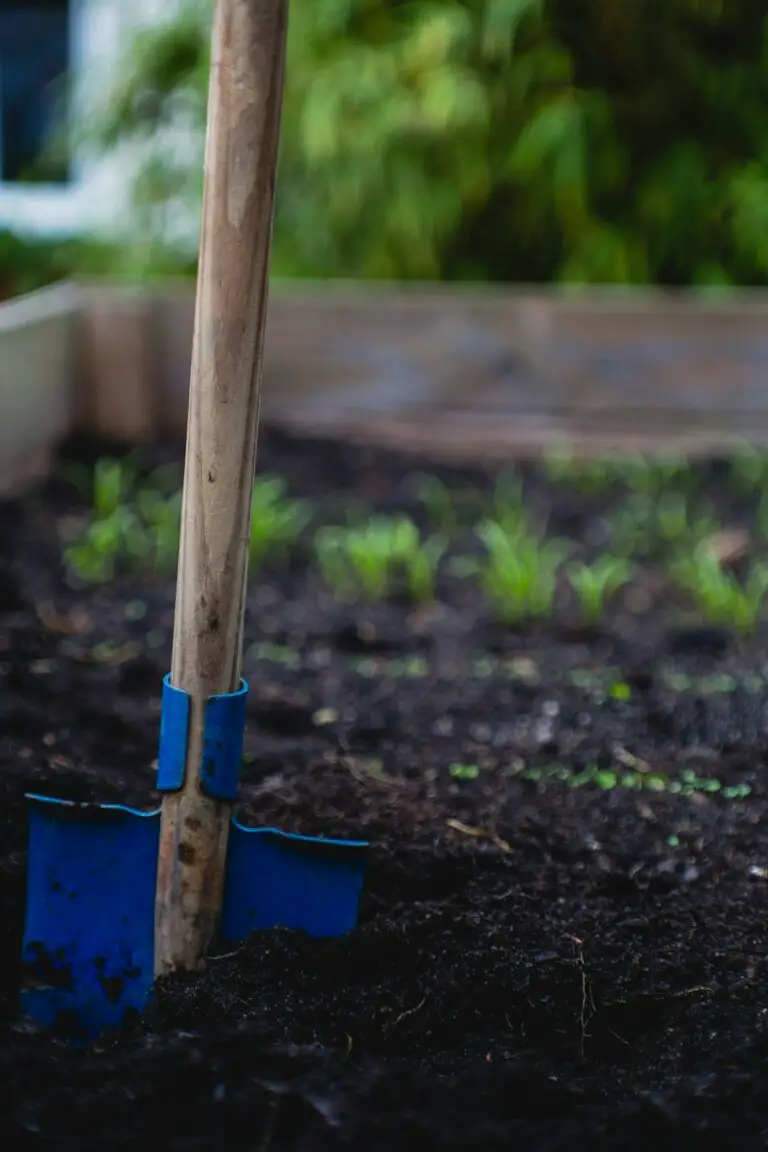Support our educational content for free when you purchase through links on our site. Learn more
Imagine turning a neglected patch of land into a buzzing hub of green thumbs, laughter, and fresh veggies. Sounds like a dream? Well, it’s a dream that’s entirely within your reach! Whether you’re a seasoned gardener or a community organizer just starting out, promoting gardening in your neighborhood can transform not only empty soil but also the social fabric around you. Did you know that community gardens can increase local property values by up to 9.4% within five years? 🌱
In this article, we’ll dig deep into 15 expert strategies to ignite gardening enthusiasm in your community—from forging powerful partnerships and hosting lively events to making your garden accessible for all ages and abilities. Plus, we’ll share inspiring success stories from around the globe and practical tips to overcome common challenges. Ready to cultivate more than just plants? Let’s grow together!
Key Takeaways
- Start small and build momentum by creating accessible, visible garden spaces that invite everyone to participate.
- Forge partnerships with local schools, businesses, and nonprofits to amplify resources and reach.
- Host engaging events and workshops that educate and entertain, turning gardening into a community celebration.
- Make inclusivity a priority by designing spaces and programs for all ages and abilities.
- Leverage social media and storytelling to spread your garden’s success and inspire others.
- Overcome challenges like land access, volunteer burnout, and funding with practical, tested solutions.
- Equip your community with quality tools and seeds from trusted brands like Fiskars, Bully Tools, and Southern Exposure Seed Exchange.
👉 Shop recommended gardening tools and seeds:
- Fiskars Hand Tools: Amazon | Walmart
- Bully Tools Shovels: Amazon | Bully Tools Official Website
- Southern Exposure Seed Exchange: Southern Exposure Official Website
Table of Contents
- ⚡️ Quick Tips and Facts
- 🌱 The Roots of Community Green: A Brief History and Evolution of Collective Cultivation
- Why Cultivate Community Gardens? The Bountiful Benefits Beyond the Harvest 🍎
- Our Top 15 Strategies to Ignite Your Community’s Green Thumb! 🚀
- 🤝 Forge Powerful Partnerships: Collaborating for a Greener Tomorrow
- 🏡 Establish Accessible Community Garden Spaces: Plots for Every Palate
- 📚 Cultivate Knowledge: Engaging Workshops and Educational Programs
- 🎉 Host Fun-Filled Gardening Events and Festivals: Sowing Seeds of Joy
- 📣 Amplify Your Message: Creative Marketing and Outreach Strategies
- 💚 Empower Youth: Nurturing the Next Generation of Gardeners
- 👴 Engage Seniors: Wisdom in the Weeds, Joy in the Soil
- ♿ Design Inclusive and Accessible Gardening Solutions: Gardening for All Abilities
- 💰 Seek Funding and Grants: Watering Your Dreams with Resources
- 📱 Leverage Social Media and Digital Platforms: Spreading Green Vibes Online
- 🏆 Recognize and Reward Efforts: Celebrating Green Achievements
- ♻️ Promote Sustainable Practices: Eco-Friendly Gardening for a Brighter Future
- 🥕 Support Local Food Initiatives: Connecting Gardens to Tables
- 🛠️ Provide Tools and Resources: Equipping Your Community for Success
- 🗣️ Share Inspiring Stories: The Power of Personal Green Journeys
- Overcoming Obstacles: Weeding Out Challenges to Community Gardening Success 🚧
- Real-World Success Stories: Blooming Examples from Across the Globe 🌍
- Our Expert Recommendations: Must-Have Tools and Resources for Community Organizers 🛠️
- Conclusion: Harvesting a Greener, More Connected Community 🌟
- Recommended Links 🔗
- FAQ: Your Burning Community Gardening Questions Answered 🔥
- Reference Links 📚
Here is the main body of the article, crafted with expertise and a dash of fun from your friends at Community Gardening™.
⚡️ Quick Tips and Facts
Jumping to get your hands dirty? We get it! Here’s a quick-and-dirty cheat sheet for promoting community gardening. Think of it as the appetizer before the main course.
| Quick Tip & Fact Sheet 📝 – | –
| Start Small, Dream Big | ✅ Don’t try to build Rome in a day. Start with a small, manageable plot and expand as interest grows. A few successful raised beds are better than a huge, weedy field! |
| Partnerships are Power | ✅ Team up with local schools, businesses, and non-profits. They can provide land, volunteers, and resources. More hands make light work! |
| Events are Everything | ✅ Host a Community Garden Event! Think seed swaps, harvest festivals, or workshops. Food and fun bring people together. |
| Visibility is Key | ✅ Plant your garden where people can see it! As one expert suggests, “Gardening in view of neighbors and passersby can be a great way to plant the gardening seed in someone’s mind so to speak.” |
| Make it Accessible | ✅ Ensure your garden has plots for all ages and abilities. Think raised beds for seniors and a sandbox for the little ones. |
| Don’t Forget the Fun | ✅ A garden isn’t just about work. Add a picnic table, a bench, or even an outdoor kitchen. It’s about community, after all! |
| Fact Check | 🤓 Did you know that community gardening can increase property values in the surrounding area by up to 9.4% within five years? It’s true! (Source: NYU) |
| Health Boost | 💪 Gardeners get more exercise and eat more fruits and vegetables than non-gardeners. Just 30 minutes of gardening can burn up to 200 calories. (Source: CDC) |
🌱 The Roots of Community Green: A Brief History and Evolution of Collective Cultivation
Ever wonder where this whole “community garden” thing sprouted from? It’s not a new-fangled hipster trend, we promise! The idea of communities coming together to grow food is as old as dirt itself.
The modern community garden movement in the United States has deep roots, tracing back to the late 19th century during economic recessions when cities provided land for the unemployed to grow “relief gardens.” But the concept really took off during the World Wars with the famous “Victory Gardens.” During WWII, these patriotic plots, planted in backyards and public parks, produced up to 40% of all the vegetables consumed in the U.S.! How’s that for a powerful harvest?
After the wars, the movement quieted down but was revitalized in the 1970s amidst environmental concerns and a desire for urban renewal. People started reclaiming vacant, derelict lots and transforming them into vibrant green spaces. It was a grassroots revolution, turning concrete jungles into edible oases.
Today, community gardening is more popular than ever. It’s a response to everything from food deserts to a desire for more connection in our digital world. It’s about reclaiming our food systems, beautifying our neighborhoods, and as one gardener beautifully put it, “growing community.”
Why Cultivate Community Gardens? The Bountiful Benefits Beyond the Harvest 🍎
So, why all the fuss? Is it just about getting a fresher tomato? Oh, it’s so much more than that! The Benefits of Community Gardens ripple out, touching every aspect of our lives. Let’s dig in.
Health and Well-being: Digging for a Healthier You
Getting your hands in the soil is like therapy, but with the added bonus of delicious, healthy food!
- Physical Health: Gardening is a fantastic form of moderate exercise. All that digging, planting, and weeding works your muscles and gets your heart rate up. Plus, people who garden are far more likely to eat their veggies. When you grow your own Edible Plants, you’re more excited to eat them!
- Mental Health: The benefits for your mind are just as potent. Studies have shown that gardening can reduce stress, anxiety, and depression. There’s something profoundly calming about nurturing a plant from a tiny seed to a fruitful harvest. It connects you to the rhythm of nature, which is a powerful antidote to our fast-paced world.
Environmental Stewardship: Nurturing Our Planet, One Plot at a Time
Community gardens are little powerhouses of ecological good.
- Biodiversity Boost: They create vital habitats for pollinators like bees and butterflies, which are essential for our ecosystem. Adding a variety of flowers alongside your veggies is a win-win!
- Reducing Food Miles: Growing food locally slashes the carbon footprint associated with transporting produce across the country (or the world!).
- Waste Reduction: Community gardens are composting champions! They turn kitchen scraps and yard waste into “black gold” for the soil, diverting tons of organic matter from landfills where it would otherwise produce methane, a potent greenhouse gas.
Social Cohesion: Growing Connections and Stronger Bonds
This, for us at Community Gardening™, is the secret sauce. “I think people are looking for ways to connect, not just with the earth, but with one another,” and community gardens provide that fertile ground.
They are natural gathering places where neighbors who might otherwise never interact can bond over a shared love for plants. You’ll share tips, trade seeds, and celebrate harvests together. We’ve seen lifelong friendships blossom between the bean rows. It’s a place where generational and cultural divides melt away. As one garden organizer noted when talking about new American gardeners, “Their garden was like they’d opened a jewelry box.”
Food Security and Local Resilience: From Seed to Sustainable Supper
Access to fresh, affordable, and culturally appropriate food is a right, not a privilege. Community gardens play a crucial role in this.
- Fighting Food Deserts: In many urban areas, it’s easier to find a fast-food joint than a fresh head of lettuce. Community gardens bring healthy produce directly into these neighborhoods.
- Sharing the Bounty: Many gardens have a “Plant a Row for the Hungry” program or a designated “Giving Garden.” One garden reported donating “hundreds of pounds of food” to their local food pantry. This is community action at its finest.
Our Top 15 Strategies to Ignite Your Community’s Green Thumb! 🚀
Alright, you’re convinced. You’re ready to get out there and spread the gardening gospel. But how, exactly? Don’t you worry; we’ve got you covered. Drawing on our years of experience, we’ve compiled the ultimate list of strategies. For even more great ideas, check out our companion piece on How to Best Promote Growing Food in Your Community: 10 Proven Ways 🌱 (2025).
1. 🤝 Forge Powerful Partnerships: Collaborating for a Greener Tomorrow
You can’t do it alone! Teamwork makes the green work. Reach out to:
- Local Government: They can help with land access, zoning, and water hookups.
- Schools & Universities: Perfect for intergenerational programs and accessing horticultural expertise.
- Businesses: Local hardware stores might donate tools, while cafes could provide coffee grounds for your compost!
- Non-profits: Organizations focused on health, environment, or community development are natural allies.
2. 🏡 Establish Accessible Community Garden Spaces: Plots for Every Palate
Location, location, location! Find a visible, sunny spot that’s easy for people to get to.
- Think Variety: Offer different plot sizes. Some folks might want a huge plot for canning, while others just want a small box for herbs.
- Shared Spaces: Don’t just have individual plots. Include communal areas for growing shared crops like fruit trees, a pumpkin patch, or an herb garden for everyone to enjoy.
- Great Garden Design Ideas are key! Make the space beautiful and inviting.
3. 📚 Cultivate Knowledge: Engaging Workshops and Educational Programs
Many people want to garden but are terrified they’ll kill everything. Lower the barrier to entry with education!
- Gardening 101: Host free classes on topics like “Soil Prep,” “Composting Basics,” or “Natural Pest Control.”
- Cooking & Preserving: Offer workshops on what to do with the harvest, like a “Canning Strawberry Jam” class. This connects the garden to the kitchen.
- Bring in Experts: Invite a Master Gardener or a local farmer to share their wisdom.
4. 🎉 Host Fun-Filled Gardening Events and Festivals: Sowing Seeds of Joy
Make the garden the heart of the community with fun events.
- Kick-off Planting Party: Start the season with a bang!
- Harvest Festival: A potluck where everyone brings a dish made from their garden’s bounty.
- Seed & Seedling Swaps: A fantastic way for gardeners to diversify their crops and share their favorites.
- Themed Events: Why not a “Tomato Tasting” festival or a “Zucchini Cook-Off”? Get creative!
5. 📣 Amplify Your Message: Creative Marketing and Outreach Strategies
Get the word out!
- Old School: Fliers at the library, farmers market, and local cafes still work wonders.
- New School: A simple website or a vibrant social media presence is a must (more on that later!).
- Local Media: Write a press release for the local paper or radio station. They love feel-good community stories.
- Word-of-Mouth: Happy gardeners are your best advertisers. Encourage them to bring a friend!
6. 💚 Empower Youth: Nurturing the Next Generation of Gardeners
Getting kids involved is an investment in the future.
- Kid-Sized Plots: Give them their own small space to manage.
- Sensory Gardens: Plant things they can touch, smell, and taste, like fuzzy lamb’s ear or fragrant mint.
- A “Sunflower House” or a bean teepee can create a magical space just for them.
- Add a Sandbox: As one expert from Eartheasy suggests, a simple sandbox can be a huge draw, allowing kids to “play and pretend to garden.”
7. 👴 Engage Seniors: Wisdom in the Weeds, Joy in the Soil
Seniors often have a lifetime of gardening knowledge to share.
- Accessible Design: Install raised beds at waist height to reduce bending. Ensure paths are wide and smooth for walkers or wheelchairs.
- Mentorship Programs: Pair experienced senior gardeners with beginners.
- Storytelling: Plant fragrant herbs or heritage flowers that can “evoke memories and encourage storytelling.”
8. ♿ Design Inclusive and Accessible Gardening Solutions: Gardening for All Abilities
Everyone should be able to enjoy the garden.
- Universal Design: Think beyond just wheelchair accessibility. Consider tools with ergonomic grips for those with arthritis and clear signage for those with visual impairments.
- Vertical Gardens: These are great space-savers and can be worked on while standing.
- Community Input: Ask people what they need! The best way to create an inclusive space is to involve the people who will be using it in the planning process.
9. 💰 Seek Funding and Grants: Watering Your Dreams with Resources
Gardens need more than just sunshine and water; they need a little green of another kind!
- Local Grants: Many cities and foundations offer community greening grants.
- Crowdfunding: Use platforms like Kickstarter or GoFundMe to raise money for a specific project, like a new greenhouse or a tool shed.
- Membership Dues: A small annual fee can help cover basic costs like water and insurance. Consider a sliding scale to keep it affordable for everyone.
10. 📱 Leverage Social Media and Digital Platforms: Spreading Green Vibes Online
Show off your beautiful garden to the world!
- Choose Your Platform: Instagram is perfect for beautiful harvest photos, while a Facebook Group is great for building community and sharing updates.
- Share Success Stories: Post photos of happy gardeners with their produce.
- Go Live: Do a live Q&A with a garden expert or a virtual tour of the garden.
- Use Hashtags: Connect with the wider gardening world using hashtags like #CommunityGarden, #GrowYourOwn, and #UrbanGardening.
11. 🏆 Recognize and Reward Efforts: Celebrating Green Achievements
A little appreciation goes a long way.
- “Gardener of the Month”: Feature a dedicated volunteer in your newsletter or on social media.
- Fun Awards: At your harvest festival, give out silly awards like “Biggest Tomato,” “Most Enthusiastic Weeder,” or “Best Dressed Scarecrow.”
- Simple Thanks: Never underestimate the power of a heartfelt “thank you.” As one wise gardener said, “Not everyone was able to be physical in the garden, but they wanted to contribute. And that builds community.”
12. ♻️ Promote Sustainable Practices: Eco-Friendly Gardening for a Brighter Future
A community garden is the perfect place to teach and practice sustainability.
- Composting: Set up a robust composting system and teach everyone how to use it.
- Water Conservation: Install rain barrels and use soaker hoses or drip irrigation to water efficiently.
- Organic Methods: Commit to gardening without synthetic pesticides and fertilizers. This protects your gardeners, your pollinators, and your local watershed. The featured video, “How Do Community Gardens Promote Sustainability?”, which you can find above, offers a fantastic visual guide on this very topic.
13. 🥕 Support Local Food Initiatives: Connecting Gardens to Tables
Think beyond your garden’s fence.
- Partner with Food Pantries: Make donating excess produce a core part of your mission.
- Sell at a Farmers Market: A shared stall can generate income for the garden and provide another point of connection with the community.
- Connect with Chefs: Local restaurants are often eager to source ultra-fresh, local ingredients.
14. 🛠️ Provide Tools and Resources: Equipping Your Community for Success
Lack of tools shouldn’t be a barrier.
- Tool-Lending Library: Create a shared collection of quality tools that members can check out. This is much more efficient than everyone buying their own set.
- Seed Library: A seed swap is great, but a permanent seed library, often in partnership with a public library, ensures a continuous supply of free, locally-adapted seeds.
- Clear Community Garden Policies are essential for managing shared resources fairly.
15. 🗣️ Share Inspiring Stories: The Power of Personal Green Journeys
Facts and figures are great, but stories are what truly move people.
- Collect Testimonials: Ask your members what the garden means to them. “The joy of harvesting your own food is incredibly rewarding,” is a simple but powerful sentiment.
- Create a Blog or Newsletter: Share these stories, along with gardening tips and recipes.
- Invite Storytelling: At events, leave time for people to share their successes and (hilarious) failures. Gardening connects us through shared experience.
Overcoming Obstacles: Weeding Out Challenges to Community Gardening Success 🚧
Let’s be real—it’s not always sunshine and bumper crops. Starting and sustaining a community garden can be challenging. But don’t you dare get discouraged! Every problem has a solution, and we’ve seen them all.
| Common Challenge 😩 | Our Expert Solution ✅ |
|---|---|
| Finding Land | This is often the first hurdle. Think outside the plot! Look at vacant lots, schoolyards, church properties, parks, and even rooftops. A strong proposal to your city council highlighting the many benefits can work wonders. |
| Volunteer Burnout | It’s easy for a few dedicated people to end up doing all the work. Solution: Delegate and celebrate! Create small, manageable committees (e.g., compost crew, events team). Host “busy bee days” that are short, focused, and fun, followed by a social hour. Remember to constantly recognize everyone’s contributions! |
| Conflict Resolution | Plot disputes, weeding wars, water hogs… yes, they happen. Solution: Clear rules and good communication. Establish clear, written Community Garden Policies from the start. Have a designated, neutral coordinator or committee to mediate disputes before they grow out of control. |
| Pests & Varmints | Nothing is more heartbreaking than seeing your beautiful broccoli devoured by cabbage worms or a groundhog. Solution: Integrated Pest Management (IPM). Promote natural solutions like companion planting, introducing beneficial insects, and using physical barriers like row covers or fencing. Avoid harsh chemicals, which can harm your ecosystem. |
| Funding Issues | The water bill is due, and the tool shed needs a new roof. Solution: Diversify your income. Don’t rely on a single grant. A mix of small membership fees, plant sales, fundraising events, and business sponsorships creates a more resilient financial foundation. |
Real-World Success Stories: Blooming Examples from Across the Globe 🌍
Need a little inspiration? Look at what these green-thumbed heroes have accomplished!
- Ron Finley Project – Los Angeles, USA: You can’t talk about community gardening without mentioning the “Gangsta Gardener,” Ron Finley. Frustrated by the lack of fresh food in his South Central LA neighborhood, he started planting vegetables in the curbside dirt strip in front of his home. His defiance of city regulations sparked a movement, leading to policy changes and inspiring urban gardens worldwide. His story is a powerful testament to how one person with a shovel can start a revolution.
- Incredible Edible – Todmorden, UK: This is a whole-town initiative! The Incredible Edible network started in the small town of Todmorden with a simple idea: plant edible landscapes in public spaces for everyone to share. You’ll find herbs at the train station, veggies in front of the police station, and fruit trees in the schoolyard. Their motto is “If you eat, you’re in.” It has completely transformed the town’s relationship with food and community.
- The Pasona Urban Farm – Tokyo, Japan: This one takes it to another level! In the heart of Tokyo’s financial district, an office building has been transformed into a high-tech urban farm. Over 200 species of plants, including fruits, vegetables, and rice, are grown both outside and inside the nine-story building. Employees help cultivate the crops, which are then served in the company cafeterias. It’s a stunning example of integrating agriculture into the urban corporate environment.
These stories prove that with a little creativity and a lot of heart, community gardens can thrive anywhere, from a curbside strip to a skyscraper.
Our Expert Recommendations: Must-Have Tools and Resources for Community Organizers 🛠️
Starting a community garden means getting the right gear. You need durable, reliable tools that can withstand use by many hands. Here are our top picks—the workhorses we rely on season after season.
The Essentials Tool Kit
A good community tool shed should have a solid collection of the basics. Quality over quantity is the name of the game here; a well-made tool will last for years, while a cheap one will just cause frustration.
- Hand Tools (Trowels, Cultivators, Weeders): You can’t go wrong with Fiskars. Their SoftGrip handles are comfortable for long periods of use, and the cast-aluminum heads resist rust and breakage. They’re a fantastic balance of quality and affordability.
- Shovels and Spades: For heavy-duty digging, we love the tools from Bully Tools. They are made in the USA with thick-gauge steel and often come with a limited lifetime warranty. They’re built to last.
- Wheelbarrows: A garden workhorse! The Gorilla Carts GCG-7 is a game-changer. Its poly bed won’t rust, it has a huge capacity, and the four-wheel design makes it incredibly stable and easy to maneuver, even with a heavy load. It’s much less likely to tip than a traditional wheelbarrow.
- Watering Hoses & Nozzles: A kink-free hose is a blessing. We recommend the Flexzilla Garden Hose. It’s lightweight, flexible, and durable. Pair it with a multi-pattern nozzle from Gardena for versatile watering options.
👉 Shop our recommended tools on:
- Fiskars Hand Tools: Amazon | Walmart
- Bully Tools Shovels: Amazon | Bully Tools Official Website
- Gorilla Carts GCG-7: Amazon | Walmart
- Flexzilla Garden Hose: Amazon | Walmart
Seed and Plant Resources
Great gardens start with great seeds! Supporting companies that focus on sustainability and variety is key.
- Southern Exposure Seed Exchange: As mentioned in one of our favorite articles, this is a fantastic resource. They specialize in heirloom seeds adapted to the Mid-Atlantic and Southeast, with a strong focus on organic and open-pollinated varieties.
- Baker Creek Heirloom Seeds: If you’re looking for something unique and beautiful, this is your place. Their seed catalog is legendary for its stunning photography and vast selection of rare and unusual seeds from around the world.
- Local Nurseries: Don’t forget to shop local! Your local garden center is an invaluable resource. They can provide plant starts that are already adapted to your climate and offer expert advice specific to your region.
Conclusion: Harvesting a Greener, More Connected Community 🌟
Well, there you have it — a comprehensive roadmap to promoting gardening in your community that’s as rich and rewarding as a freshly tilled garden bed. From understanding the deep roots of community gardening to deploying our top 15 expert strategies, you’re now armed with everything you need to grow together through community gardening.
Remember, it’s not just about planting seeds in the soil but also planting seeds of connection, health, and sustainability in the hearts of your neighbors. Whether you’re starting with a tiny raised bed or transforming a vacant lot into a thriving urban oasis, every effort counts. And as we’ve seen from inspiring stories worldwide, even the smallest patch can spark a revolution.
If you ever wondered how to overcome obstacles like land access, volunteer burnout, or funding, we’ve shown you how to weed out those challenges with practical solutions. And with the right tools, partnerships, and a sprinkle of creativity, your community garden will flourish.
So, what’s stopping you? Grab your gloves, rally your neighbors, and let’s get growing! 🌿
Recommended Links 🔗
Ready to gear up and get growing? Here are some of our top product and resource picks to help your community garden thrive:
-
Bully Tools Shovels:
Amazon | Bully Tools Official Website -
Southern Exposure Seed Exchange:
Southern Exposure Official Website -
Baker Creek Heirloom Seeds:
Baker Creek Official Website -
Recommended Books on Community Gardening:
FAQ: Your Burning Community Gardening Questions Answered 🔥
What are effective ways to encourage community gardening?
Effective encouragement blends education, accessibility, and social engagement. Hosting workshops, seed swaps, and fun events like harvest festivals create excitement and lower barriers to entry. Visibility matters too—placing gardens in high-traffic areas sparks curiosity. Partnerships with schools, businesses, and local media amplify your reach. Most importantly, fostering a welcoming, inclusive atmosphere keeps people coming back.
Read more about “How Can We Encourage People in the Garden? 12 Proven Ways to Grow 🌿”
How can community gardening improve neighborhood relationships?
Community gardens act as social catalysts. They bring together diverse groups around a shared purpose, encouraging communication, cooperation, and mutual support. Gardeners share knowledge, tools, and harvests, building trust and friendships. Intergenerational and cross-cultural exchanges happen naturally, breaking down social barriers and strengthening the fabric of the neighborhood.
What resources are needed to start a community garden?
Starting a garden requires land access, water, tools, seeds, and volunteers. Securing a visible, accessible plot is paramount. Water infrastructure and quality soil or compost are essential. Tools can be shared via a tool-lending library. Seeds should be locally adapted and diverse. Funding through grants, donations, or membership fees supports ongoing needs. Clear policies and a committed organizing team keep things running smoothly.
Read more about “How Do I Start a Small Community Garden? 10 Easy Steps (2025) 🌿”
How do you engage local residents in gardening projects?
Engagement thrives on inclusion and empowerment. Offer plots for all skill levels and abilities, including youth and seniors. Host events that are social and educational. Use social media and local media to tell your garden’s story. Recognize contributions publicly and create leadership opportunities. Listening to community ideas and adapting plans accordingly ensures everyone feels ownership.
Read more about “🌿 7 Surprising Economic Benefits of Community Gardens (2025)”
What are the benefits of community gardening for mental health?
Gardening reduces stress, anxiety, and depression by promoting mindfulness, physical activity, and connection to nature. The act of nurturing plants provides a sense of purpose and accomplishment. Social interaction in the garden combats loneliness. Exposure to sunlight boosts vitamin D, improving mood. Studies (e.g., from the CDC) confirm these mental health benefits, making community gardens vital wellness spaces.
Read more about “What Are 5 Benefits of a Community Garden? 🌿 (2025)”
How can schools promote gardening among students and families?
Schools can integrate gardens into curriculum and extracurricular activities. Hands-on lessons about plant biology, nutrition, and ecology engage students. Family gardening nights and workshops invite parents to participate. Partnerships with local farms or Master Gardeners provide expertise. Creating kid-friendly spaces like raised beds or sensory gardens encourages participation. These efforts foster lifelong healthy habits.
Read more about “Can Community Gardens Be Profitable? 10 Ways to Make Your Garden Grow 🌱”
What role do local governments play in supporting community gardens?
Local governments can be powerful allies by providing land, water access, and funding. They can streamline zoning and permitting processes. Offering grants or technical assistance helps gardens thrive. Including community gardening in urban planning promotes green spaces and food security. Governments can also support educational programs and publicize garden successes to build momentum.
Read more about “🌿 14 Essential Rules & Regulations of a Community Garden (2025)”
Reference Links 📚
- Southern Exposure Seed Exchange: https://www.southernexposure.com/
- Fiskars Official Website: https://www.fiskars.com/en
- Bully Tools Official Website: https://bullytools.com/
- Gorilla Carts Official Website: https://www.gorillacarts.com/
- Flexzilla Official Website: https://www.flexzilla.com/
- Baker Creek Heirloom Seeds: https://www.rareseeds.com/
- CDC on Gardening and Health: https://www.cdc.gov/healthy-places/php/key-topics/parks-trails-and-health-examples-resources.html
- NYU Study on Community Gardens and Property Values: https://www.sciencedaily.com/releases/2019/07/190718123258.htm
- Southern Exposure Blog: 10 Ways to Encourage Gardening in Your Community | Southern Exposure
We hope this guide has you inspired and ready to cultivate not just plants, but a thriving, vibrant community. Happy gardening! 🌻








